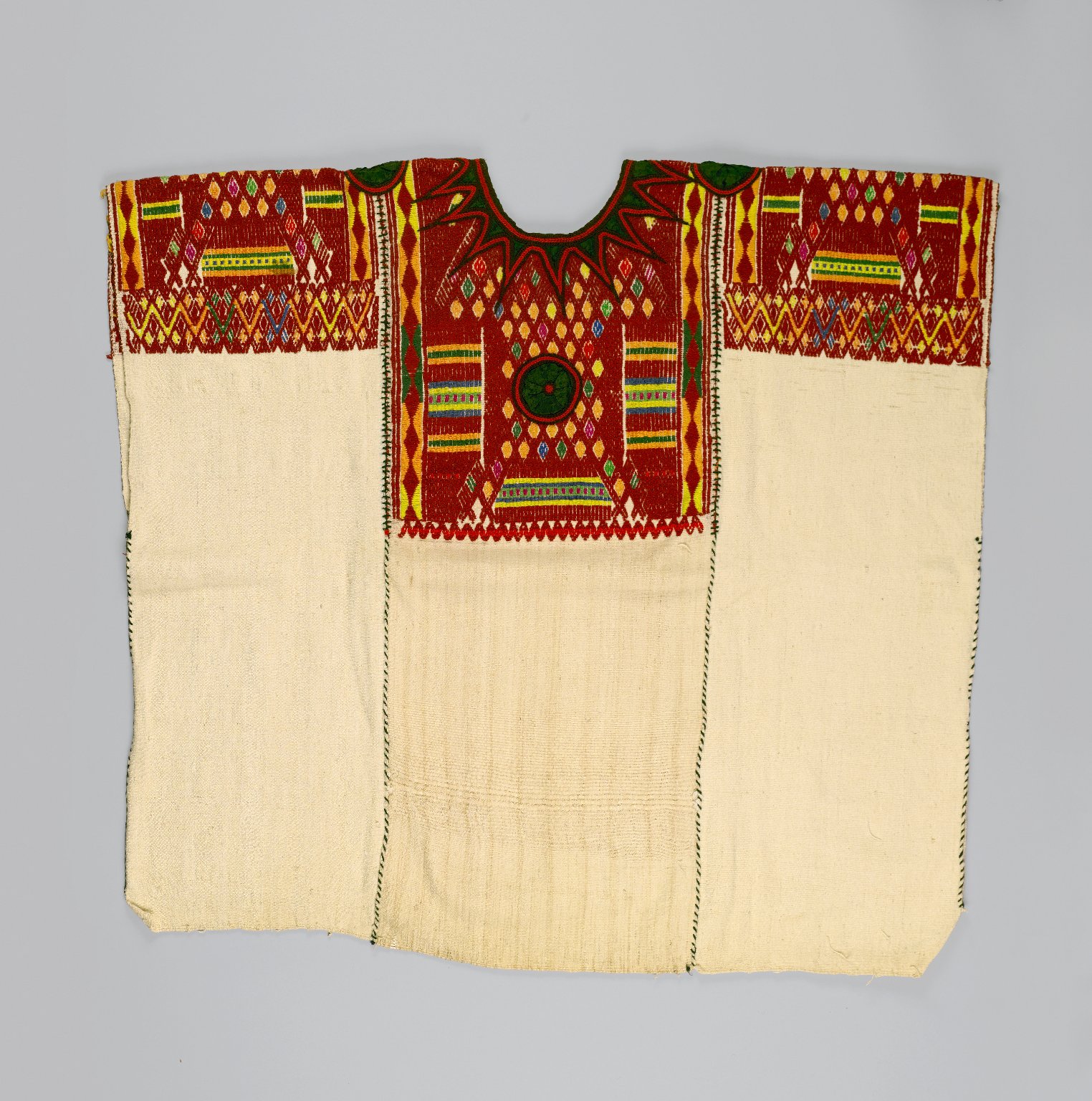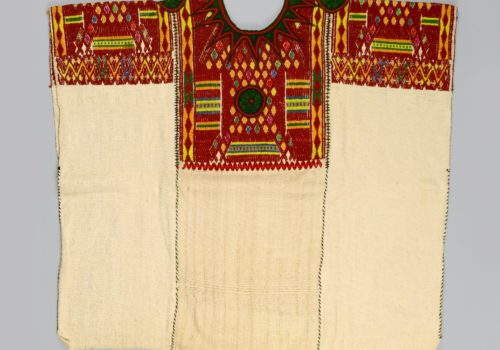Huipil

Summary
Huipil is the most common traditional garment worn by indigenous women from central Mexico to Central America.
It is a loose-fitting tunic, generally made from two or three rectangular pieces of fabric which are then joined together with stitching, ribbons or fabric strips, with an opening for the head and, if the sides are sewn, openings for the arms. Traditional huipils, especially ceremonial ones, are usually made with fabric woven on a backstrap loom and are heavily decorated with designs woven into the fabric, embroidery, ribbons, lace and more. However, some huipils are also made from commercial fabric.
Lengths of the huipil can vary from a short blouse-like garment or long enough to reach the floor. The style of traditional huipils generally indicates the ethnicity and community of the wearer as each have their own methods of creating the fabric and decorations. Some huipils have intricate and meaningful designs. Ceremonial huipils are the most elaborate and are reserved for weddings, burials, women of high rank and even to dress the statues of saints.
What does Huipil look like?
Discover Huipil crafts from The Craft Atlas and other digital collections in the image gallery.


